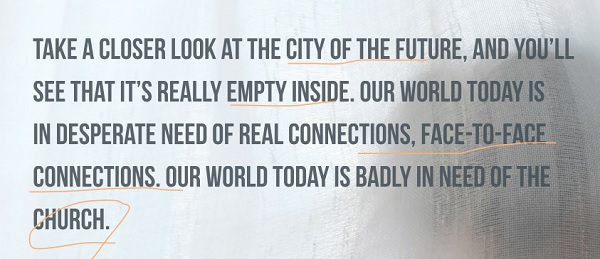Hidden
By Scott Yi

When I look at the world today, its technological marvels and futuristic devices, sometimes I can’t help but think about the enormous ironies of the 21st century. Today, we have greater access to information than almost all of history’s greatest geniuses…and yet ignorance and racism are still part of our everyday news cycle. Our world is connected on a scale that seems miraculous and futuristic…and yet all the research is telling us people are feeling more isolated. What looks like a shining beacon is hollow inside. Technology claims to connect people, our innovations claim to bring people closer together, but we now know this just isn’t the case. It isn’t what has happened at all. Instead of bringing people together, social media just ingrains us further into the demographic bubbles that we’re already a part of. Instead of exposing us to new people and new experiences, technology has made us go deeper into our personal preferences and biases. So what’s actually happened is that our world has become more segregated, not less. These days, it seems as if people don’t understand each other at all. You can see that especially with the current state of politics. Or, just read any comments section on the internet, if you want to see how divided we are. The world isn’t the way we thought it would be. It’s hollow inside.
No matter how far our technology progresses, no matter how vast our social networks may expand, I’m convinced, now more than ever, of the importance of the local church. The world needs the local church. And that’s because no one can connect people like the church connects people. What the church can offer is genuine community. A community of flesh and blood, a community of hospitality and inclusiveness, a community of diverse experiences and diverse relationships. This is the gift that Jesus always meant for his church to usher into the world.
Scripture makes this principle clear in ways both big and small, both obvious and hidden. We can look at the Twelve Apostles and notice how unalike their personalities were. We can appreciate how often women are mentioned in the New Testament, at a time when their testimony was not even accepted in court. In the Letter to Philemon, Paul encourages a slave owner to be reconciled to his former slave. Getting people connected is exactly what we see happen in the early church.
But as I mentioned, there are also hidden ways in which the biblical authors conveyed their message of inclusiveness. There’s an ancient literary form known as the chiasmus. This hidden pattern can be found all throughout ancient Greek and Hebrew literature. It’s been uncovered in both Old and New Testament texts as well. A chiasmus is made up of words that are repeated in a mirror pattern (ABCBA), in which the central element becomes the key to understanding a passage.

There is just such a chiasmus hidden in Acts 2:41-47. The chapter in question is a snapshot into what the early church looked like. The Pentecost event had created 3,000 converts in a single day, and Luke, the writer of Acts, tells us these new believers began meeting together every day. So when we look at this story about the birth of the early church, we might want to ask: what was it that drew people in? What was the key to the growth of the early church? If we knew that, then maybe it would help us in our own eff orts. Looking at the text, it seems there are several options to choose from. We know that this chapter in Acts is the same one where the apostles spoke in tongues, so maybe that was it. Maybe it was Peter’s powerful preaching, which had “cut to the heart” of the people (verse 37), that made all the difference. Maybe a good sermon is what drew the people. That certainly seems to be the main draw for church shoppers these days.
However, there’s something more important to church growth than either of those things. The next section about the life of the church contains a few repeating phrases. Verses 41 and 47 both talk about adding to their numbers. Verses 42 and 46 both mention the breaking of bread. The writers of the Bible would not expend their parchments on repetition unless there was a point to it. So this section here in verses 41-47 is a chiasmus. In most modern Bibles, it’s hard to see this pattern because they’ve split up the passage with subheadings, but remember, these subheadings were not part of the original writing. The center of the chiasmus is found in verses 44 and 45. Our eyes are meant to be drawn to these verses. The decisive phrase is, “All the believers were together.” Luke is letting us know in a very subtle way that the key to church growth is in its community life.
We have something so special that we can offer the world. What we see here are people from different nations and from different classes, people who have no business knowing one another, getting along. Becoming brothers and sisters. Sacrificing for people who they barely know. I think it’s so easy for those of us who were raised in the church to just take this for granted, how truly unique the Body of Christ is. There is no secular version of a community like this. People aren’t supposed to help each other like this. Two thousand years after the story of Acts, with all the scientific breakthroughs we’ve had since then, and still, no one connects people like the church connects people.

An important article came out about a year ago in The Atlantic. The title is, “Have Smartphones Destroyed a Generation?” It was written by someone who studies generational trends. This person researched how one age group differs from the next age group, and what she found was that young people today, especially teenagers, are actually more different than any generation that has come before. The way that teenagers and young adults behave now is completely different from young people even fifteen years ago. And the reason is something world-shattering happened in the year 2012. 2012 marks a transitional moment in American history: it was the moment at which more than 50% of the population owned a smartphone. It was the year in which smartphones became part of our everyday lives. Since then, the way that people behave and relate to each other has changed dramatically. Most of us have probably already noticed some of these changes. People can be in a room together, but barely be present. Our phones are the last thing we look at before we go to bed and the very first thing we see when we wake up. Our phones have become a part of our bodies. We’ve chained ourselves to our technology. And yet the effects have been even more severe than anyone realized. In the era of connectedness, people are as lonely as they’ve ever been. Young people are becoming shut-ins. They’re spending less time with their friends. They’re going out less. They’re working less. They’re dating less. Teens don’t care about having their independence anymore; what they care about is how many likes they can get. And on the flip side, depression has skyrocketed. Young people today are on the edge of a mental health crisis.
So the world’s claims of progress are an illusion. Their promises of a better, more productive society are just a marketing ploy. Take a closer look at the city of the future, and you’ll see that it’s really empty inside. Our world today is in desperate need of real connections, face-to-face connections. Our world today is badly in need of the church. So I believe that when the church does what it does best, when we help people to rediscover what it feels like to be part of a family, we could have a new revival on our hands. We could be the ones to bring our cities together. This is an opportunity for us, definitely, but more than that, it’s a responsibility. It’s a sacred responsibility. We need to make sure the church community is a welcoming community, and that means we need to make sure that it’s accessible to everyone. There’s no better hospitality than when someone can walk into a church for the very first time and feel safe–safe in being who they are, and safe in being cared for by the God who always crosses boundaries. We have the ability to connect people like no other force out there ever has. God has given us the cure for the loneliness of the world. All we have to do is open our hearts, and not let ourselves stay hidden any longer.


 Scott Yi is the lead pastor of International Alliance Church in Providence, Rhode Island, a multicultural congregation dedicated to empowering the powerless. He graduated from Brown University and received his M.Div. from Gordon-Conwell Theological Seminary with a specialty in Urban Ministry. Scott is also the director of the Youth Collaborative, a nonprofit that equips urban teens for success through entrepreneurial training and community innovation.
Scott Yi is the lead pastor of International Alliance Church in Providence, Rhode Island, a multicultural congregation dedicated to empowering the powerless. He graduated from Brown University and received his M.Div. from Gordon-Conwell Theological Seminary with a specialty in Urban Ministry. Scott is also the director of the Youth Collaborative, a nonprofit that equips urban teens for success through entrepreneurial training and community innovation.